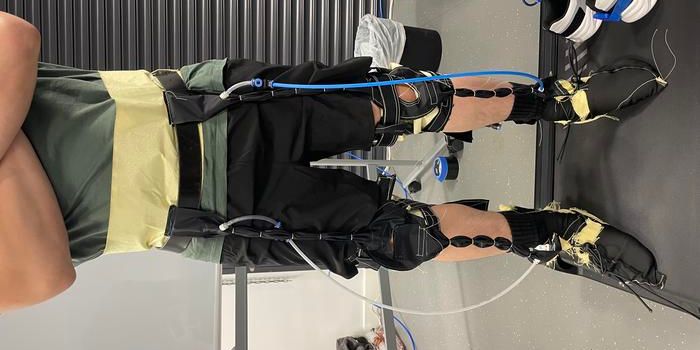"Candy" models allow the visually impaired to visualize complex 3D images with tongue
New research hopes to improve accessibility to science for people who are blind or visually impaired. Approximately 36 million people (1 million of whom are children) are blind and an even higher number (approximately 216 million) have moderate to severe visual impairment. These disabilities make it difficult to access STEM education, given that science, technology, engineering and math primarily rely on 3D imagery.
In order to improve accessibility, professor Bryan Shaw, Ph.D. of the chemistry and biochemistry departments at Baylor University, has designed tiny, gelatin models which he says are akin to gummy bears that can improve visualization of protein molecules using oral stereognosis. Oral stereognosis refers to the visualization of 3D shapes via the tongue and lips. Shaw’s findings are detailed in the journal Science Advances.
"Your tongue is your finest tactile sensor -- about twice as sensitive as the fingertips -- but it is also a hydrostat, similar to an octopus arm. It can wiggle into grooves that your fingers won't touch, but nobody really uses the tongue or lips in tactile learning. We thought to make very small, high-resolution 3D models, and visualize them by mouth," Shaw explained.
To test the models, Shaw invited 31 fourth- and fifth-graders and 365 college students to participate in a blindfolded oral and manual tactile experiment. As Science Daily explains: “Each participant was given three minutes to assess or visualize the structure of a study protein with their fingertips, followed by one minute with a test protein. After the four minutes, they were asked whether the test protein was the same or a different model than the initial study protein. The entire process was repeated using the mouth to discern shape instead of the fingers.”
The results were outstanding: the participants identified structures by mouth at 85.59% accuracy, which is comparable to recognition by eyesight with computer animation. "You can visualize the shapes of these tiny objects as accurately by mouth as by eyesight. That was actually surprising," Shaw commented.
The possibilities of the gelatin models don’t stop at protein molecules: "This methodology could be applied to images and models of anything, like cells, organelles, 3D surfaces in math or 3D pieces of art -- any 3D rendering. It's not limited to STEM, but useful for humanities too," exclaimed lead study author Katelyn Baumer.
And, as the researchers point out, this type of visualization isn’t only for people with visual impairment. As far as 3D imagery technologies go, this one is low-cost and portable, making its accessibility extend far past where the eye can see (or can’t see). The team hopes their breakthrough will challenge the barriers facing the visually impaired in both STEM settings and beyond.
Sources: Science Advances, Science Daily








